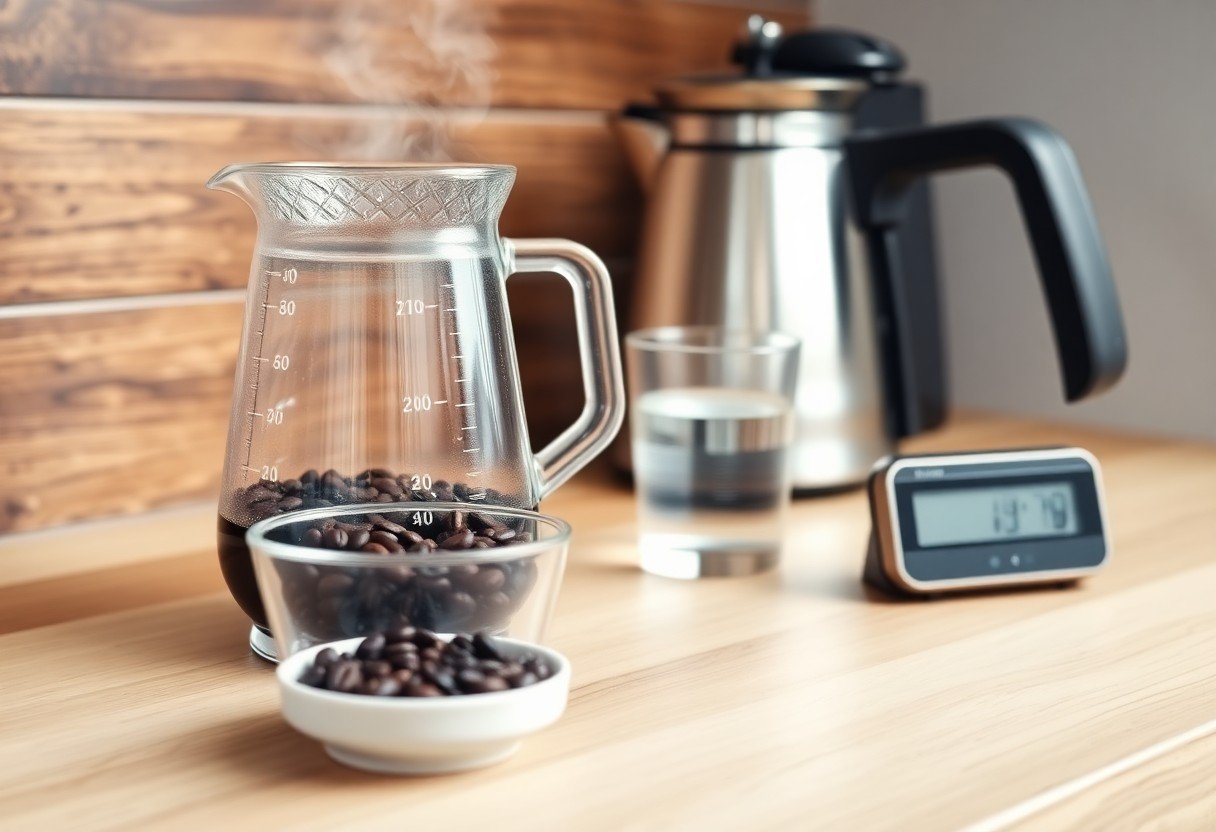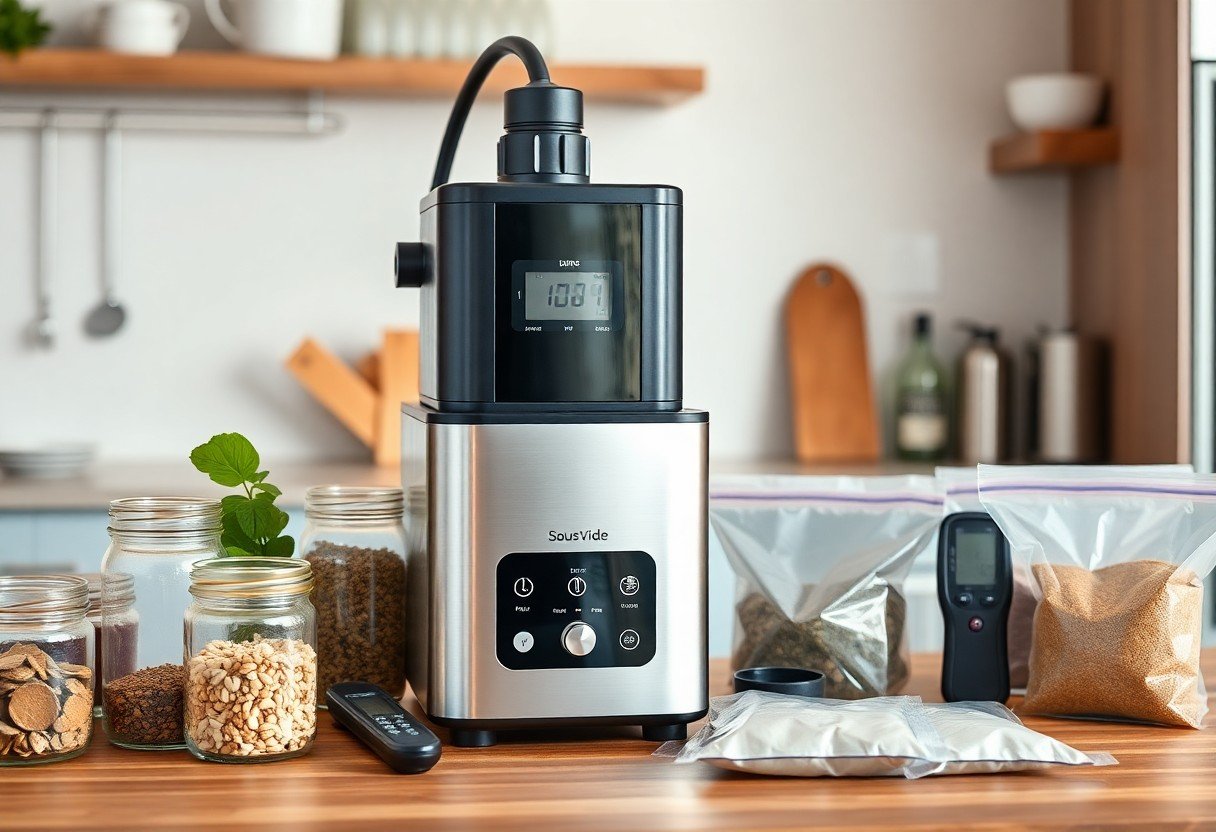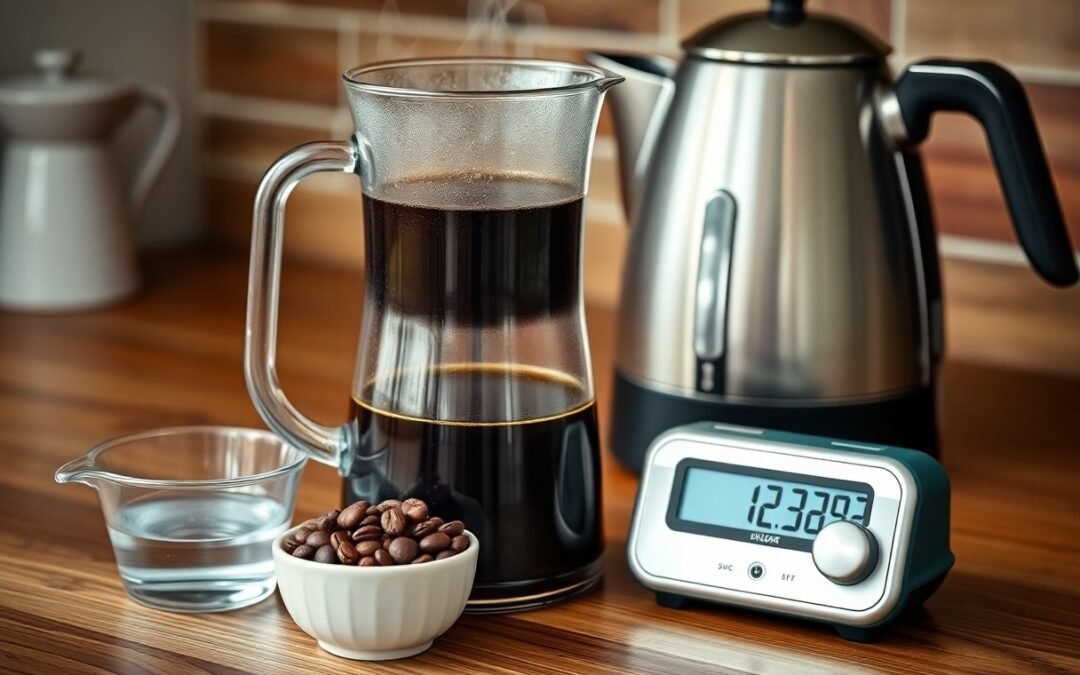Just as you’ve mastered the crucials of brewing, it’s time to elevate your coffee experience with advanced methods that enhance flavor and complexity. This guide will introduce you to techniques like pour-over, siphon brewing, and cold brew, empowering you to explore the art of coffee craftsmanship. You will learn how to fine-tune variables such as grind size, water temperature, and extraction time to achieve a perfect cup tailored to your taste. Get ready to transform your at-home brewing routine into a sophisticated ritual.

Unleashing the Power of Cold Brewing
Cold brewing transforms your coffee experience by producing a smooth, less acidic beverage. This method utilizes cold water over an extended brewing time, typically 12 to 24 hours, allowing for a balanced extraction of flavors and aromas. With a more pronounced sweetness and body, cold brew can be enjoyed alone or as a versatile base for various coffee drinks.
The Chemistry of Cold Extraction
Cold extraction leverages the solubility of coffee compounds at lower temperatures, drawing out important oils and flavors without the harsh acidity associated with hot brewing methods. This slower process reduces the extraction of bitter compounds, resulting in a coffee that highlights subtle layers of flavor, creating a refreshing and smooth beverage that tantalizes your taste buds.
Tools and Techniques for the Perfect Brew
To master cold brewing, invest in a quality cold brew coffee maker or use a simple mason jar or a large container. Coarse coffee grounds work best, ideally in a ratio of 1:4 coffee to water for a robust flavor. After steeping, strain the brew through a fine mesh sieve or coffee filter, and store the concentrate in the refrigerator for up to two weeks, ready to be diluted with water or milk for your perfect cup.

Embracing the Precision of Sous Vide Brewing
Sous vide brewing offers unmatched precision, enabling you to extract optimal flavors from your ingredients by controlling temperature with incredible accuracy. By immersing your brew at a consistent temperature, you unlock a spectrum of aromatic compounds while preventing over-extraction, allowing each brew to shine with its unique profile. This method transforms the act of brewing into a science, providing you with repeatable results that cater to your specific palate preferences.
Temperature Control for Flavor Extraction
Different coffee beans or tea leaves release their flavors at specific temperatures. For instance, lighter roasts might thrive at 185°F (85°C), while darker roasts could benefit from a slightly higher setting. Below is a brief overview:
| Type | Temperature (°F) |
| Light Roast Coffee | 185°F |
| Medium Roast Coffee | 200°F |
| Dark Roast Coffee | 205°F |
| Green Tea | 175°F |
| Black Tea | 212°F |
Equipment Essentials for At-Home Sous Vide
To successfully brew using the sous vide method at home, you’ll need a few key pieces of equipment. A reliable immersion circulator is non-negotiable, as it maintains precise water temperatures throughout the brewing process. Vacuum-sealable bags will also be important to prevent any water from diluting your ingredients and maintaining flavor integrity during brewing.
An immersion circulator, such as the Anova Culinary Sous Vide Precision Cooker, provides a reliable way to maintain your desired temperatures. Pair this with a set of durable vacuum bags—like those from FoodSaver—to achieve optimal results. Consider a large container or thermal bath that can accommodate multiple servings, as this allows for batch brewing. Lastly, having a reliable scale for accurate ingredient measurements will ensure consistency in your brews, making your experiments as predictive and enjoyable as possible.
Exploring the Art of Nitro Brewing
Nitro brewing opens a realm of unique textures and flavors, transforming traditional coffee or beer into rich, creamy delights. By infusing beverages with nitrogen, you create a velvety mouthfeel and a cascading effect, enhancing aromas and flavors. The process typically involves using a nitrogen tank and a special tap, but understanding the science behind it elevates your brewing skills. Dive deeper into the nuances of this method, and your at-home brewing experience will reach new heights.
Creating Creamy Textures with Nitrogen
Nitrogen infusion introduces tiny bubbles, resulting in a thick, creamy head that appeals to both the eyes and palate. As nitrogen is less soluble than carbon dioxide, you achieve a smooth texture that stands in stark contrast to the sharpness of traditional carbonation. This technique enhances the mouthfeel of stouts and porters, creating a luxurious experience. Experiment with different pour techniques to further manipulate the creamy foam, making each serving a masterpiece.
Alternative Methods for Nitro Infusion
While a nitrogen tank is the most common approach, several alternative methods can create a nitro effect at home. One simple technique involves using a whipped cream dispenser filled with nitrogen cartridges, allowing you to infuse your brew seamlessly. Another option is the use of a nitrogen infuser, which utilizes a specialized attachment to inject nitrogen directly into your beverage. Each method varies in complexity and cost, but all can yield delicious, nitrogen-rich results.
A whipped cream dispenser is particularly accessible; fill it with your favorite cold brew or coffee, charge it with a nitrous oxide cartridge, and shake vigorously. The result is a creamy, frothy beverage that mimics traditional nitro brewing. On the more advanced side, a nitrogen infuser works by agitating the liquid with nitrogen under pressure, ensuring optimal infusion in just a few minutes. This versatility allows you to experiment more freely with different beverages, finding the ideal balance that suits your tastes.
Elevating Flavors with Modulated Fermentation
Modulated fermentation allows you to enhance and refine the flavors in your brews significantly. By adjusting variables such as temperature, duration, and oxygen levels, you can create complex aromatic profiles that elevate your drink. This meticulous approach results in distinct flavors and mouthfeel, making your homebrew stand out. Experimenting with these aspects not only increases your skill but also opens avenues for innovative flavor combinations.
The Role of Yeast Strain in Crafting Unique Brews
Your choice of yeast strain can dramatically impact the flavor and character of your brew. Different strains impart unique esters and phenols, affecting the aroma and taste profile. For instance, using a Belgian yeast can result in fruity and spicy notes, while an American ale yeast tends to produce cleaner profiles. Exploring various strains will unlock the potential for signature brews tailored to your palate.
Advanced Fermentation Techniques and Their Impacts
Utilizing advanced fermentation techniques can lead to distinct flavor developments and complexities in your brews. Ideas such as temperature control, fermentation under pressure, or utilizing mixed cultures can introduce layers of taste that standard fermentation methods cannot achieve. Techniques like oxygen management and controlled pitch rates also alter fermentation rates, yielding different characteristics in your final product.
Fermentation Techniques Comparison
| Technique | Impact on Flavor |
|---|---|
| Temperature Control | Enhances esters and phenols production |
| Pressure Fermentation | Reduces certain off-flavors, improves clarity |
| Mixed Cultures | Adds complexity and depth to flavor |
Advanced fermentation techniques not only refine your brewing process but also contribute to the overall complexity and depth of flavor in your beers. By controlling yeast activity through temperature manipulation or pressure settings, you can experiment with brew styles previously thought to be reserved for commercial-scale productions. Additionally, employing mixed cultures can lead to unexpected yet delightful outcomes, pushing the boundaries of your fermentation skills.
Techniques to Enhance Your Brewing
- Experiment with different fermentation temperatures by using a temperature-controlled fermentation chamber.
- Consider pressure fermentation to improve flavor clarity and stability.
- Try incorporating unique yeast strains or mixed cultures to add complexity.
Why You Should Experiment with Single-Origin Ingredients
Exploring single-origin ingredients can elevate your brewing experience, offering distinct flavors and profiles that reflect the unique characteristics of their region. Sourcing these ingredients lets you tap into the nuances that come from specific climates, altitudes, and cultivation practices, allowing you to create brews that are not only unique but tell a story through their taste. Embracing this aspect of brewing can significantly enhance your palate and broaden your appreciation for different origins.
Sourcing Unique Beans and Grains
Finding unique beans and grains involves seeking out specialty coffee roasters or local suppliers who prioritize quality and provenance. Direct trade relationships and farmers’ markets are excellent places to discover artisanal ingredients. Many roasters offer small-batch, single-origin coffees with detailed tasting notes and sourcing information, allowing you to select ingredients that align with your flavor preferences and brewing style.
Crafting Profiles and Understanding Terroir
Understanding the concept of terroir in brewing allows you to appreciate how environmental factors influence ingredient flavor. Each single-origin source carries a distinct profile shaped by soil composition, climate, and elevation, which contributes to the overall taste of your brew. This knowledge enables you to craft personalized profiles that highlight these unique characteristics, enhancing your brewing potential.
By studying specific regions known for their unique flavor profiles, you can make informed choices when selecting ingredients. For instance, beans from Ethiopia often exhibit fruity and floral notes due to the country’s high elevation and diverse microclimates. In contrast, Colombian beans might showcase a balanced, caramel sweetness influenced by the region’s rich volcanic soil. Engaging with the stories behind your ingredients not only enriches your brewing but also allows for more adventurous experimentation, leading to exceptional and memorable beverages.
To wrap up
Summing up, delving into advanced brewing methods empowers you to elevate your coffee experience significantly. By experimenting with techniques like pour-over, siphon, or cold brew, you can unlock a new realm of flavors and aromas. These methods not only enhance your skills but also allow you to tailor your brew to your specific preferences. Embrace the nuances of these approaches, and you’ll transform your home brewing into a sophisticated craft, making every cup an expression of your creativity and passion for coffee.
FAQ
Q: What are advanced brewing methods covered in “Beyond The Basics”?
A: The book includes methods such as pour-over, cold brew, siphon brewing, French press variations, and nitro coffee infusion.
Q: Do I need special equipment for these brewing methods?
A: Yes, some methods require specific equipment like a siphon, pour-over dripper, or nitrogenator. A detailed list is provided in the book.
Q: Will this book help improve my overall coffee flavor?
A: Yes, the book offers techniques and tips that enhance flavor extraction, aroma, and body, resulting in a more refined cup of coffee.
Q: Is this book suitable for beginners?
A: While it covers advanced methods, the book includes foundational knowledge making it accessible for those with a basic understanding of coffee brewing.
Q: Are there any recipes included?
A: Yes, the book features various recipes that guide readers in experimenting with different flavor profiles using advanced brewing techniques.

